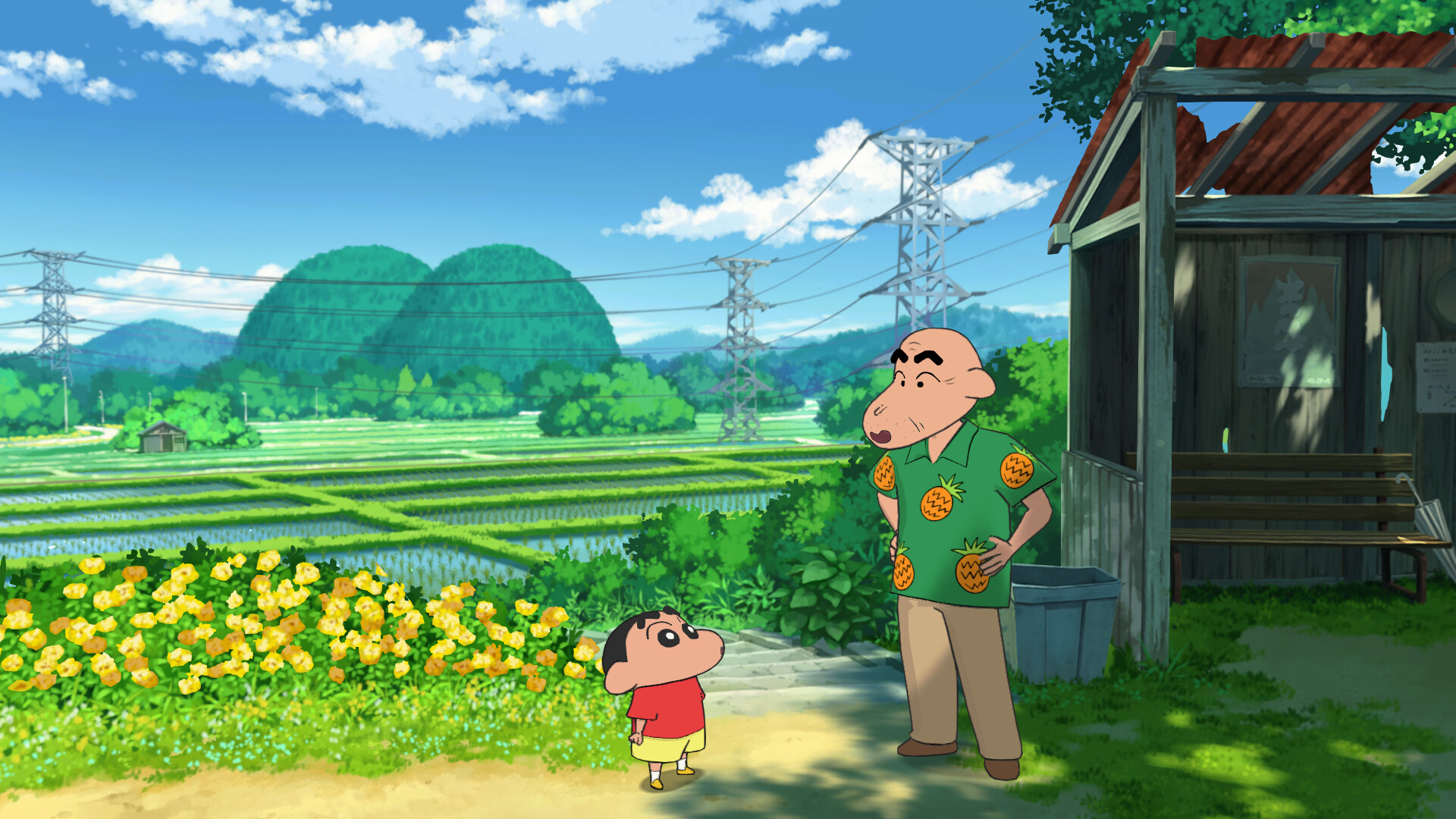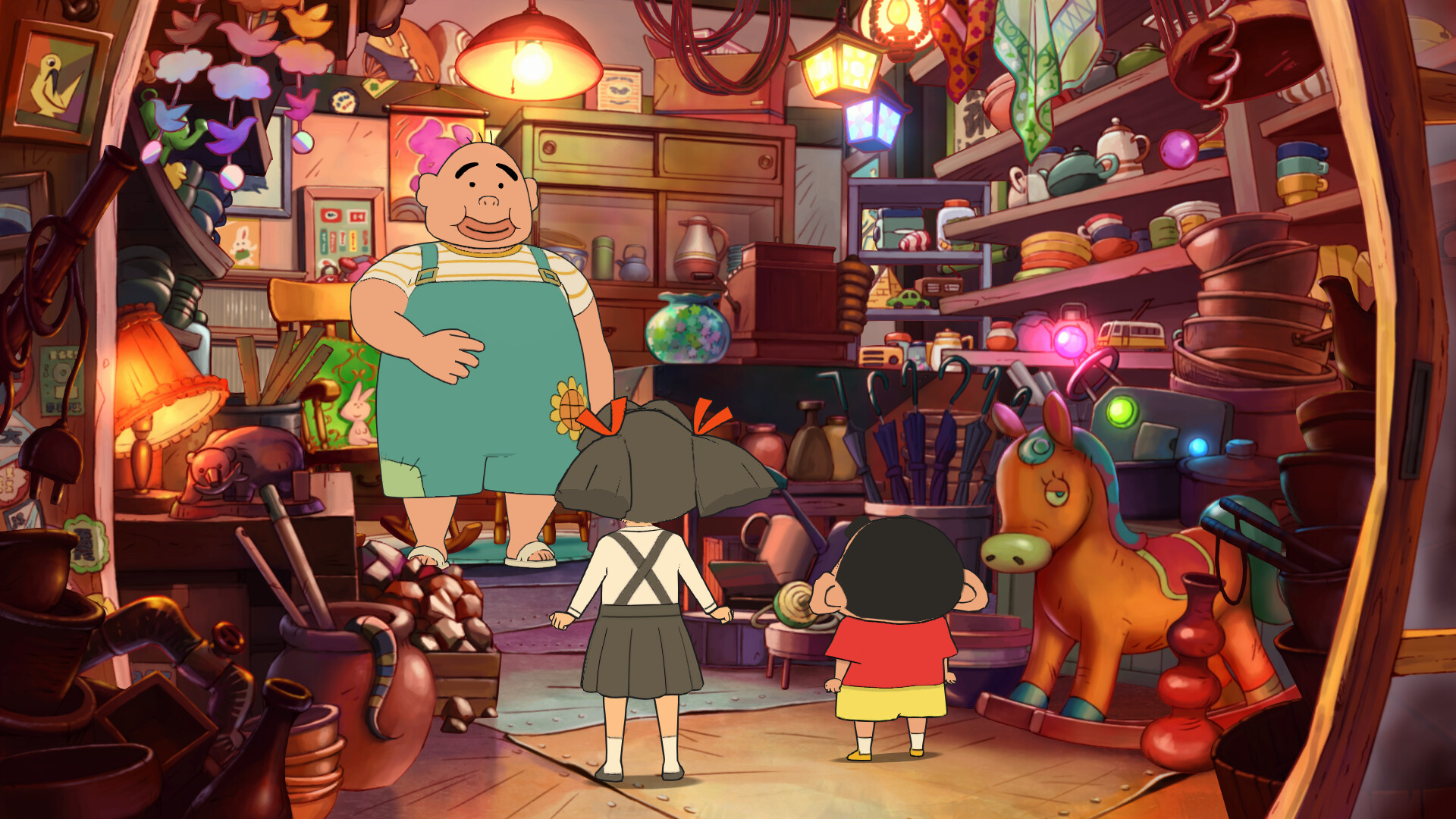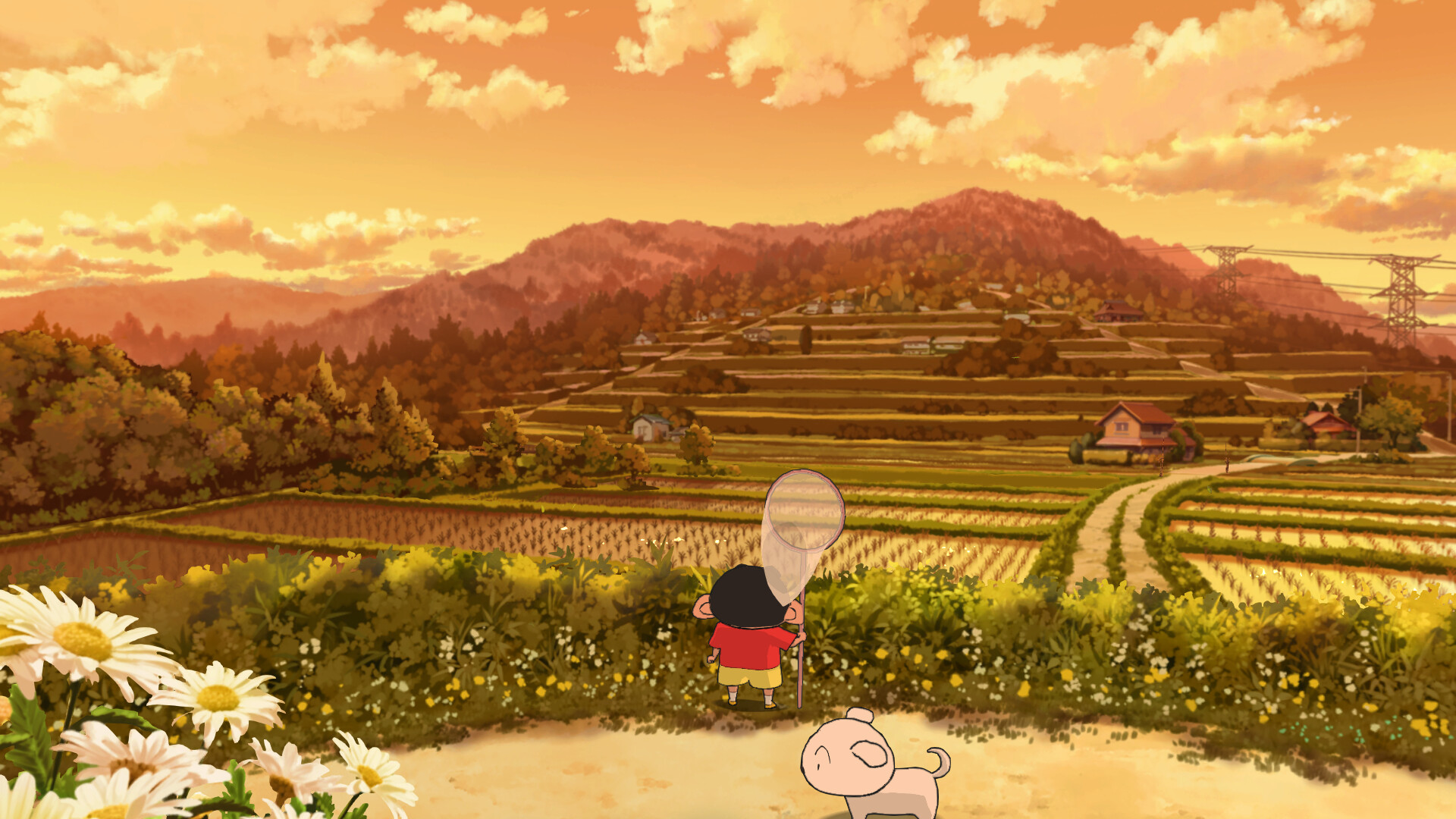2 years ago, Shinnosuke Nohara and his family spent their summer vacation in the fields and mountains of Asso. 2 years later, the family now ventures to a quaint village in the Akita prefecture for more of the same fun and games. While Shiro and the Coal Town replicates a lot of past features, like farming and fishing to fill out your compendium, there are some extra twists and turns that made the experience feel more polished and realized.
A disclaimer: in this review I’ll gloss over most of the context for this latest installment, from who Shin chan is to how Boku no Natsuyasumi inspired this creation. This can all be found in the review I wrote for Shin chan: Me and Professor on Summer Vacation, so make sure to check it out!
It says it on the tin, but this time around, Shin chan isn’t confined to the village around him. One day, Shiro (your dog) returns home covered in soot; suspicious Shin-chan lets him lead him to an abandoned bus stop where a train comes to pick you up. This gives you access to a completely new area in the form of Coal Town, a world trapped in time since the Showa era. Bathed in moody colors under an ever-present sunset and populated by heavy industry and a bustling community, this area is full of atmosphere and personality that contrast nicely to your village.
The cast of both towns are fun and quirky enough to keep me entertained, and some had moments of depth that were very much welcomed. However, unlike in Me and the Professor on Summer Vacation, Shin chan’s family takes a backseat role, letting Coal Town shine. Instead, the story takes more of a focus on what troubles Coal Town and its residents. I found this game’s story to be a lot more charming and personal than its predecessor, focusing on restoring and protecting a village that is threatened by modern change. You help a woman attract more customers to her barren restaurant, deliver meals to workers from people who care about them, and combat an organization that sees everyone’s endeavors as a waste of time and energy. These themes are a tad more mature and melancholic than dinosaurs and time loops, but both are fun in their own right.
As mentioned before, Coal Town’s aesthetic is full of personality and atmosphere, conveying a moment in time past. I felt a personal twinge at this setting, as I come from a country and town that thrived in its coal industry. Often, my grandparents tell me how much better it was back then and how everyone had jobs. However, as the world modernized, its shopping districts and people were left to rot and turn to poverty. Seeing a game that celebrates and preserves these memories whilst also acknowledging modernity was a connection I never thought I’d find in a Shin chan game!
Unbent village is also wonderfully peaceful and serene, with a map that feels easy to navigate and to get used to. We also get access to a purchasable map! However, this map offers fewer activities, with a greater emphasis on Coal Town and its narrative development. Instead, its quests are mostly compendium-focused, with a group of local kids each asking you to catch 10 fish or bring them a specific bug, progressing until you 100% your compendium.
Shin chan and the villagers all retain that signature Shin chan look but with more polished models, thickening their body lines to pop out more on the screen so you don’t find yourself lost in its pre-rendered backgrounds. Screens still have areas that have you guessing where you can and can’t go, but I think it’s a vast improvement on its predecessor’s maps. Its UI and other related features have also been tweaked to be more aesthetic and functional, an example being making dialogue boxes smaller, a lack of repetition in plot points, and fish having improved outlined shadows to see what you will catch before casting your rod.
The gameplay is still simple, but with some additions that gave it a new flavor. You still have your bug-catching, fishing, and farming, and they play in the exact same way, but a welcome addition to farming was its location in-game. On summer vacation, the fields were awkwardly placed, so I always forgot to go back and water them every day. In Coal Town, the field is right outside your house, embedding watering and planting into my daily routine more seamlessly. The game is largely a collectathon, with most quests asking you to get a specific item; however, this is split more interestingly across locations. Bulletins make a reappearance, but they’re used as a way of trading items that may be harder to get or to turn some money. Instead, Shin chan balances getting cooking ingredients to make meals at Coal Town’s local restaurants, giving new meals to different villagers. You also have the lab, whose quests require gemstones and materials. This is an addition to its collectathon nature but doesn’t bog down the gameplay as they are readily found and are often rewards in most quests.
Coal Town’s minigame comes in the form of a rail track kart game where you face off against different opponents for resources. You can modify your cart with a lot of options available, from faster engines to laser beams. These were fun and could be quite difficult at times with different obstacles and tracks to choose from, and they also make an appearance in the main quest, which adds to the weird charm of Shin chan’s adventure.
Despite being hypnotized by wanting to 100% this game, I found that the late game suffers from balancing issues in terms of items required for the main quest. By this point I had already started grinding through each day to get to the next, as part of a quest can only be done once per day. I felt the end approaching and was quickly slapped in the face when the main storyline asked me to collect a ridiculous number of resources, 200 of one said item. When I saw that I only had 20, I decided to put it down for a while. This was a major problem as gems are attributed to randomly generated spawns, with the player maybe acquiring 2 of said items one day but 7 the next. This means that I would have to spend a good few hours hanging around to find these items, as they couldn’t be purchased. This didn’t ruin the game for me, but it definitely soured my mood.
Another issue I have is the price point of this game, standing at nearly 40 USD!! A steep price for a 10-hour experience whose gameplay isn’t anything new or that engaging compared to games half its price. It may be worth looking for it on sale in a few weeks’ time if you’re not sure whether it’s the game for you.























